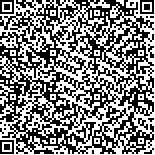| 引用本文: | 寇斌,郭士杰,任东城.改进粒子群算法的工业机器人几何参数标定[J].哈尔滨工业大学学报,2022,54(1):9.DOI:10.11918/202010025 |
| KOU Bin,GUO Shijie,REN Dongcheng.Geometric parameter calibration of industrial robot based on improved particle swarm optimization[J].Journal of Harbin Institute of Technology,2022,54(1):9.DOI:10.11918/202010025 |
|
| 摘要: |
| 针对传统粒子群(PSO)算法在解决工业机器人几何误差标定问题中存在的收敛速度慢的缺点,提出了一种基于两段式的动态粒子群算法(LDPSO-BT)。 用Denavit-Hartenberg方法建立工业机器人的误差模型,将几何误差标定问题转换成对高维非线性方程的求解;对粒子群数目进行线性递减,同时针对算法求解过程中粒子数目线性递减的特点,在改进粒子群算法迭代后期采用改进的搜索模式,对传统粒子群的速度迭代公式进行改进;仿真实验对比了工业机器人几何误差标定前与标定后两种算法的末端定位精度。 实验结果表明:在采用粒子群算法辨识工业机器人实际几何参数的过程中,粒子群数目对算法的迭代时间有重要影响,通过线性递减的方式减少粒子群的粒子数目可以有效地减少工业机器人几何误差标定时间,同时在粒子群算法迭代后期采用改进的速度迭代公式可以确保收敛精度。 与传统粒子群算法相比,使用改进后的粒子群算法,不仅可以有效减少工业机器人的定位误差,而且还拥有更高效的迭代效率。 |
| 关键词: 工业机器人 粒子群算法(PSO) 线性递减 几何误差 定位精度 |
| DOI:10.11918/202010025 |
| 分类号:TP391 |
| 文献标识码:A |
| 基金项目:国家重点研发计划项目(2017YFB1301000) |
|
| Geometric parameter calibration of industrial robot based on improved particle swarm optimization |
|
KOU Bin1,2,GUO Shijie1,2,REN Dongcheng1,2
|
|
(1. Academy for Engineering and Technology,Fudan University, Shanghai 200433, China, 2. Engineering Research Center of AI & Robotics,Ministry of Education (Fudan University), Shanghai 200433, China)
|
| Abstract: |
| Aiming at the slow convergence speed of traditional particle swarm optimization (PSO) algorithm in solving the geometric error calibration problem of industrial robots, a two-stage dynamic particle swarm optimization algorithm (LDPSO-BT) is proposed. First, the error model of the industrial robot is established by the Denavit-Hartenberg method, the geometric error calibration problem is converted into the solution of high-dimensional nonlinear equations, and then the number of particle swarms and the number of particles are linearly reduced in the algorithm solution process. In the late iteration of the improved particle swarm algorithm, an improved search mode is used to improve the speed iteration formula of the traditional particle swarm, and then the end positioning accuracy of the two algorithms before and after the geometric error calibration of the industrial robot is compared by simulation experiments. The experimental results show that the number of particle swarms has an important influence on the iteration time. Reducing the number of particles of the particle swarm linearly can effectively reduce the geometric error calibration of industrial robots. At the same time, the improved speed iteration formula can be used in the later stage of the particle swarm algorithm to ensure the accuracy of convergence. Compared with the traditional particle swarm optimization algorithm, using the improved particle swarm algorithm to obtain the geometric error revision data of the industrial robot can not only effectively reduce the positioning error of the industrial robot, but also has a more efficient iteration efficiency. |
| Key words: Industrial robot particle swarm optimization(PSO) algorithm linear decline geometric error positioning accuracy |







